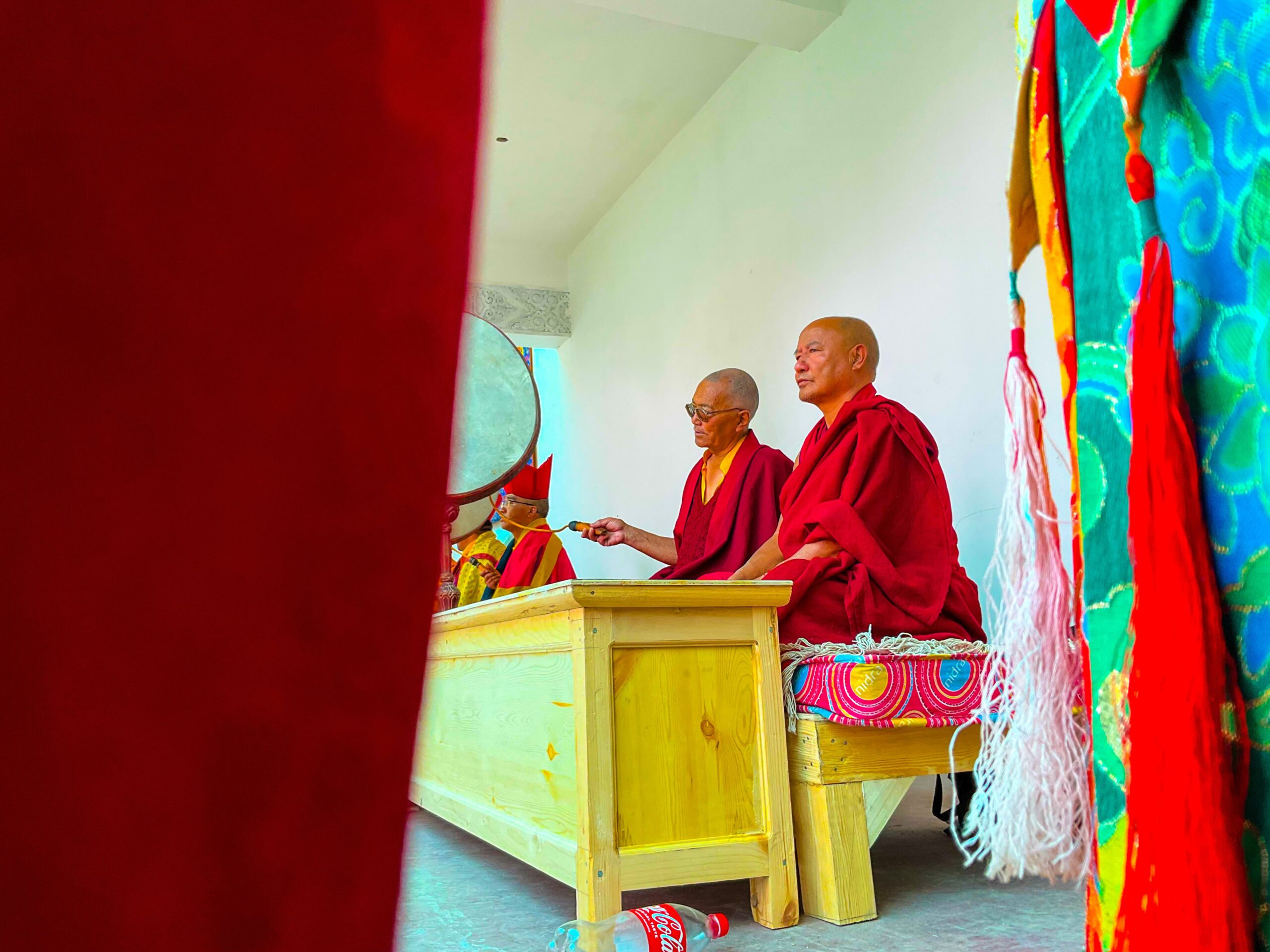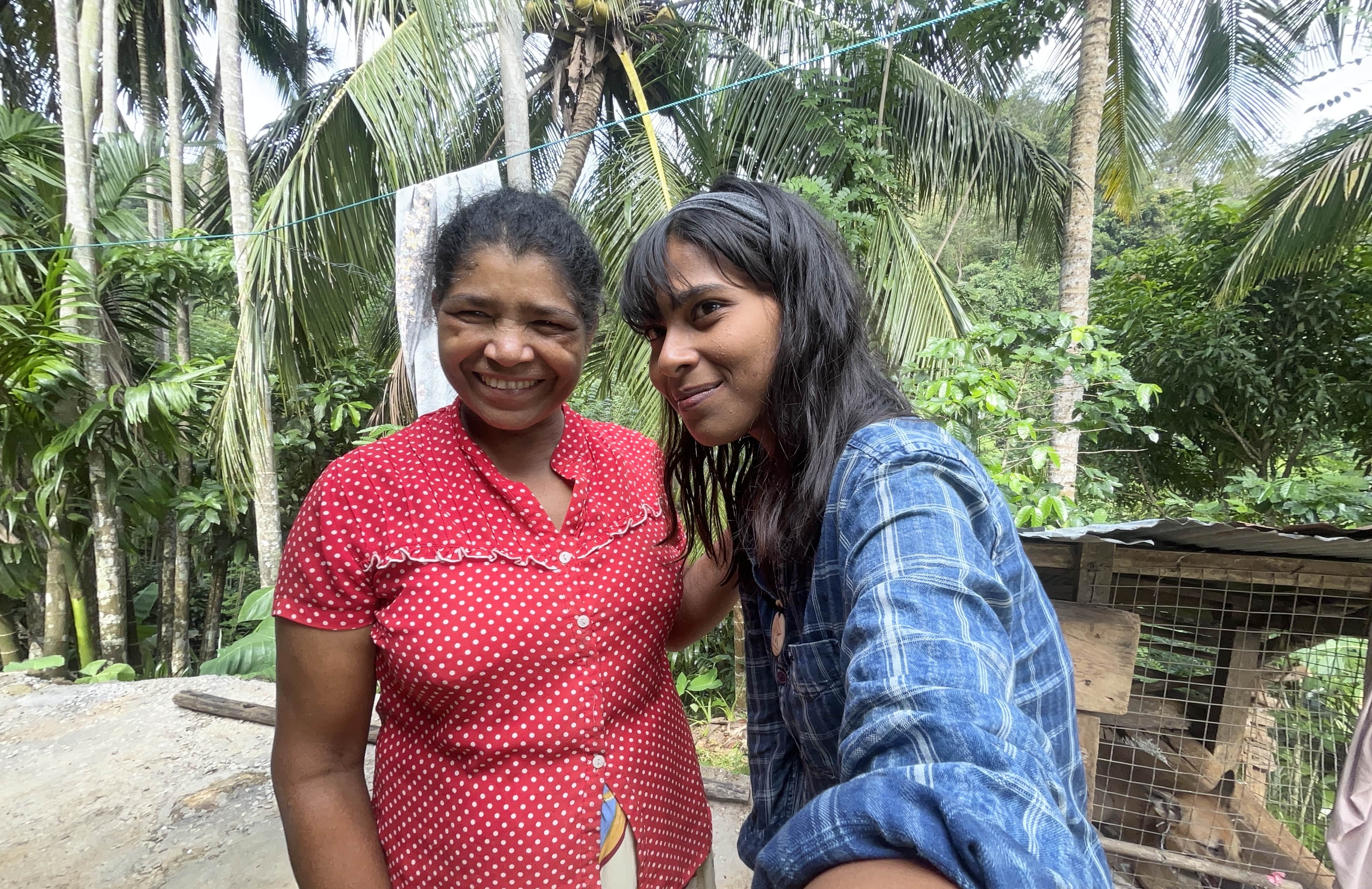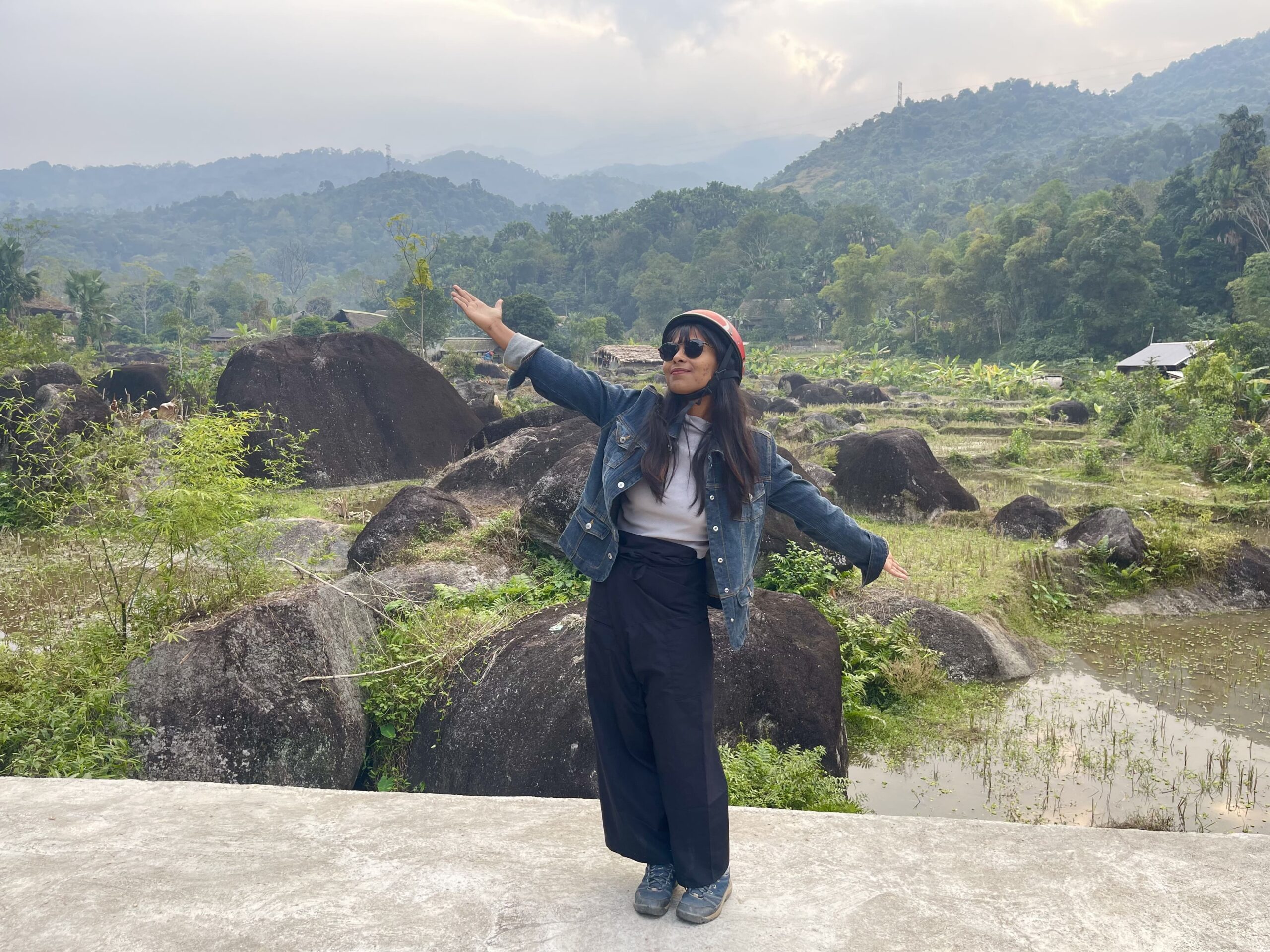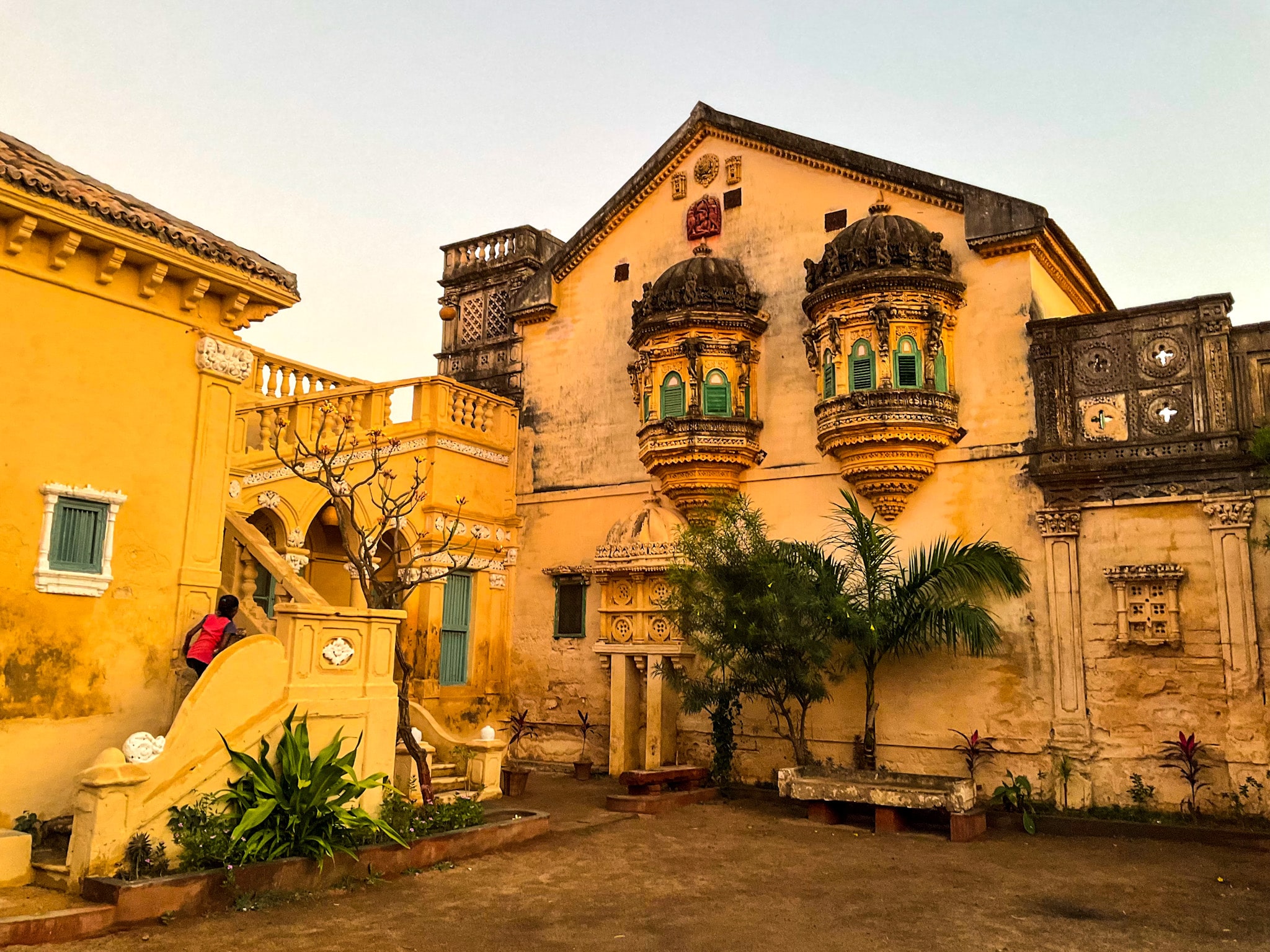With 70 monks living in Phyang Monastery, this yearly festival, known as Phyang Tsedup Festival, opens windows to Ladakhi culture on the monastery’s premises. A way to submerge in the macabre demise of evil forces over the power of the divine, cohering with Buddhist beliefs.
Phyang Tsedup Festival – A Glimpse at Buddhist Dances

He showed me the way. The South African guy had a strong built in a milky-white pale face with the tilted safari hat not drawing even a single shadow. He somehow managed to settle my hefty backpack at the back of his rented car, and me too, balancing my self on top of piled-up luggage in another man’s car dickie. The bus stop ran backwards with the four pillars of the green mosque and the ‘Om Mani Padme Hum’ on prayer flags. The car already had three hitchhikers in the middle seat, and I squeezed myself into the trunk. Willingly. That’s life.
The life that churns me on, in moments and moments before a sequence or consequence forms, through highs and lows, in unanticipation and immersive euphemisms.

Our paths were set towards the monastery in the slant, the South African guy guarding me to the courtyard of the festival. He had already been there yesterday. This is the second day of the Phyang Tsedup Festival, a cultural showcasing of the monastery’s long-held synthetic expressions. An expression that conjures the eerie and tantric secrets of Chham, a dance drama that carves the rhythm into rhythms, in graceful innuendos.
The world gathered in a broken circle, around the rows of chalked markings. ‘Don’t sit near the markings. Yesterday they were dancing with real swords’, he warns another couple. They shift to the parallel corner, emptying a full-blown view of what was about to happen, uninterrupted. What was about to happen?
Also read – Taste of Ladakh – Go Local with Ladakhi Food
The Lamas And the Spectators

The Phyang Festival blows the horn. In an open line, the head lamas sit with Rolmos and Silnyens in a high-up balcony under the blue Thangka of Buddha. Their chantings sync with the beatings of the percussion mallet against the Lag-nas (the Tibetan frame drum). The sound of togetherness casts a cult-like veil, as if the chantings juddered with the platform.
Their inviolable swords moving indelibly through the ribs, limbs, and the heart of the evil, slaying to it its left-out slabs. But the jester kept its place, appearing in linking sequences to contravene the growing tempo and the light-dark clouds.
The curtain opens in intermissions. Two young monks carry the long Tibetan Horns (Dungchen) by the strings on their shoulders, pacing in front with two others playing them. A couple of lamas queue up with Gyalings, the Chinese double reed Suona horns, siphoning the advent of the dancing lamas. They wear oversized masks that grow well above their faces and long silk costumes to celebrate the good-over-evil. Drizzles bless the land in a stupor, the lamas break into groups, humane expressions reigning in their Godly masks, hiding the maroon behind them.

‘If it rains in Phyang after the dance at the festival, it is considered to be a good omen’, and it surely rained, right after the procession went about to burn the stormas. Stormas are structures made of wheat and butter, transformed into boats, deities or, deer in colours. With the burning of these stormas, they kill off the evil eyes of the imposters. ‘Every monastery has a puja of this sort. It’s a way of keeping the villagers safe’.
A small knife in their hands, and a piece of cloth, the Lamas danced as Buddhist Gods, Goddesses and demons; in congregation, in no-pair, in jest. The jesters in long tunics and unbrushed white straight hair, chased the kids with their outwardly ‘Julley ’, and poured out some money from the spectators. The lunch was on the monastery.
If you have enjoyed reading about the Phyang Tsedup Festival of Ladakh, you may also like to read – Zanskar in the Lights & Shadows of Life
The Backstory Behind Phyang Tsedup Festival

This was the 2nd and 3rd day of the sixth month of the Tibetan Calendar. In every third year of the pig, snake, and monkey, a Thangka of Jigten Gombo is unveiled at the Phyang Festival, the founder of the Dringumpa Monastic Dynasty. Originally founded as a Kadampa establishment, Phyang Monastery is now one of the two monasteries of the Dri-gung-pa order.
An expression that conjures the eerie and tantric secrets of Chham, a dance drama that carves the rhythm into rhythms, in graceful innuendos.
“The Tibetan talent connected to the development of Thangka got here into motion from the time of Dalai Lama V. The Thangka relics are famed throughout the sector and have been internationally attributed. The important symbol of the mask dance is to prepare the people.”
In masks, green-blue-yellow or horned, in fixed expressions beyond colours, the feet of 20-25 lamas charged the ground against a black clay-structure they mimicked as the demon. Their inviolable swords moving indelibly through the ribs, limbs, and the heart of the evil, slaying to it its left-out slabs. But the jester kept its place, appearing in linking sequences to contravene the growing tempo and the light-dark clouds.
Every year the Phyang Tsedup Festival falls in July-August. To take part in the traditional festival at the monastery, keep an eye on Ladakh’s official page for dates.
Have you attended Phyang or any other Buddhist festival in Ladakh?
Support my solo adventures across the globe by joining the Patreon community!
Live the Adventure
Get weekly articles delivered to your doorstep and stay up-to-date with my new travel stories.
10 responses to “Lamas Dancing in Masks at Phyang Tsedup Festival Ladakh”
-
Wow this looks amazing!! It brings back so many memories of the Buddhist festivals we enjoyed in Bhutan!! Thanks to your beautiful photos those memories came flooding back! 🙂
-
Hey Jeanne! Can’t wait to be in Bhutan!
-
-
You are quite the storyteller! Was interesting to learn the history of the festival / ceremonies
-
Thank you very much! The festival was really fascinating.
-
-
Sounds like a great experience to be present at the Phyang festival. The costumes look so grand.
-
Yeah, it was quite grand. It was my first time experiencing it. I was quite taken aback.
-
-
This was really insightful – lovely pictures!
-
Thank you!
-
-
What a unique experience. It must be interesting to learn the symbolism behind the masks and different props.
-
Oh, it was very very interesting!
-





Leave a Reply